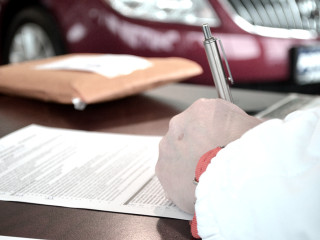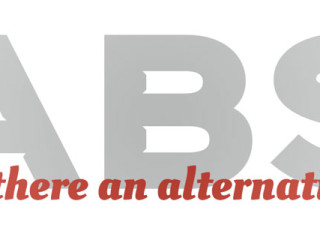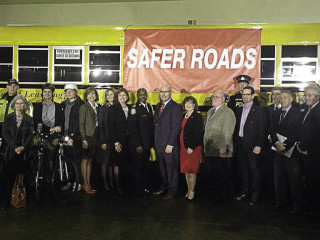Full Decision
Summary
On June 7, 2012, at approximately 1:30 am the Plaintiff was injured in a motor vehicle accident. He was seated in the front passenger seat and was not wearing a seat belt. The Defendant was travelling eastbound on College Street, when he failed to observe a stop sign at its T-intersection with Station Street, in the Town of Fonthill. The vehicle left the roadway, hit a tree, rotated 180 degrees and came to a rest facing westbound on the front lawn of a Station Street residence.
The Plaintiff sustained serious injuries including a comminuted, depressed fracture to the right rear of his skull.
On the evening of June 6, 2012, the Plaintiff and Defendant attended at the Defendant bar’s premises where they consumed draft beer with friends (the “group”). One of the reasons for going to the Defendant bar was because of a draft beer special which was being featured. This was known as the “12 for 12 special”. The 12 for 12 special was a tray of 12 cups of draft beer for $12. Each cup was designed to hold 6 ounces of beer.
The group left the Defendant bar sometime between 12:45 am and 1 am. The Defendant drove the group back to the Plaintiff’s residence in Fonthill. Soon after, the Plaintiff, Defendant and a friend re-entered the vehicle and drove to a gas bar for cigarettes. It was on the way back to the Fonthill residence that the accident occurred.
Finding of Negligence as against the Defendant Bar
Justice G.E. Taylor made the following findings of fact:
- Four trays of beer were served to the group;
- There was no policy in place at the Defendant bar which would guard against the risk of an intoxicated patron operating a motor vehicle after leaving the bar;
- There was no effort made to count the actual number of drinks consumed by any member of a group when the 12 for 12 special was being purchased; and
- The Defendant bar unreasonably assumed that all members in a group of patrons would consume an equal number of cups of beer with the 12 for 12 special.
Case Law
Citing the Ontario Court of Appeal in McIntyre v Grigg, 83 O.R. (3d) 161 at paragraph 23, Justice G.E. Taylor acknowledged that:
…commercial vendors of alcohol have an obligation to monitor a patrons consumption of alcohol and should have protocols in place to ensure that all reasonable precautions are taken to prevent such patrons who subsequently drive from becoming intoxicated to the point where they cannot safety operate a motor vehicle. Moreover, a commercial host does not escape liability simply by not knowing that the patron became inebriated before driving; the commercial host is liable if it or its employees knew or ought to have known in the circumstances that the patron was in such a condition.
Justice G.E. Taylor endorsed and cited the reasoning of Justice Kent in Widdowson v Rockwell, 2017 BCSC 385, who dealt with the argument that a commercial hosts liability terminates when the intoxicated patron arrived home, wherein Justice Kent held at paragraph 81:
In my view, there is little logic to the bald proposition that a safe arrival home “breaks the chain of causation” or otherwise discharges the pub’s duty of care.
Decision
Justice G.E. Taylor held that the liability of the Defendant Bar did not come to an end when the Defendant and Plaintiff arrived back at the Fonthill residence, and apportioned liability for the motor vehicle accident at 20% against the Defendant bar.
Contributory Negligence on the part of the Plaintiff
The Plaintiff acknowledged that he was contributorily negligent for failing to wear a seatbelt.
Dr. Thomas Jenkyn was qualified as an expert in biomechanics and automobile accident reconstruction. Dr. Jenkyn used computer software to create a simulation of the motor vehicle accident by inputting into the software the physical details of the accident scene obtained from the police investigation.
Dr. Jenkyn created a second simulation using the identical input data but with the passenger being restrained by a lap and torso seatbelt. Of note, based on this simulation, Dr. Jenkyn concluded that the right rear of the head of the seat belted occupant would still have struck the B-pillar but with less force than an unrestrained occupant.
It was the opinion of Dr. Jenkyn that the Plaintiff’s skull fracture was caused as a result of his head striking the B-Pillar.
Preferring the opinion of Dr. Jenkyn, Justice G.E. Taylor found that the Plaintiff suffered a comminuted, depressed fracture to the right rear of his skull when his head struck the B-pillar. He also accepted the evidence of Dr. Jenkyn that the Plaintiff would still have suffered a significant head injury had he been restrained.
Decision
Justice G.E. Taylor declined to assign a percentage of contributory negligence to each component of that negligence and then total the percentages. Instead he considered the Plaintiff’s contributory negligence in its totality and concluded that the Plaintiff’s contributory negligence for failing to wear a seat belt, entering a vehicle which he knew would be operated by an impaired driver and encouraging the Defendant driver to drive faster should collectively result in a reduction of his damages by 25%.
Cost orders have not yet been made.












